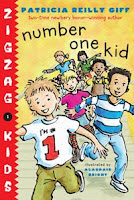By Jane Yolen
Illustrated by David Small
Philomel Books, 2010
$17.99, ages 4-8, 40 pages
Worried she'll lose herself in the silence of the prairie, Elsie hides away in her Nebraska house until a pet canary gives her the courage to reach out to the wild world around her.
In this stellar collaboration by Caldecott winners Yolen and Small, a motherless girl is uprooted from the only home she knows and learns to connect to a new way of life by opening her senses to the subtle sounds of the grasslands.
Elsie never wanted to leave her home in Boston. She loved the raucous sound of gulls, the clop of horse hooves and the trill of city song birds. With pigtails flying, she would jump rope and sing the birds' songs back to them.
But after Elsie's mama died, Papa couldn't shake his sadness. He longed to get away from Boston and any reminders of what used to be, so he tells Elsie, his only child, that they will head west to find happiness again.
Elsie, however, isn't anxious to leave and she's surprised by how far they have to travel by train. As one day of travel slips into another, Elsie worries about what awaits her and wonders if she should have stayed behind with her grandparents.
But having lost her mother, Elsie couldn't have parted from Papa. So she tries to focus on her canary, Timmy Tune, who sings to her from his birdcage, though even he can't distract her from the clack of train wheels, which seems to go on and on.
When they finally arrive in Nebraska, their sod home is 10 miles from any town and looks as lonely as Elsie feels. "Here there is only grass and sky and silence," she writes to Nana and Nonny. At night the only thing Elsie hears is her own crying.




















